Legends of Motorsport: Bernd Rosemeyer
Picture a 20-something biker slaloming his motorcycle between overhead trolley piers while standing nonchalantly atop its saddle. That’s how Zora Arkus-Duntov—the then-future patron saint of the Corvette—met Bernd Rosemeyer in 1931 when the two worked at competing Berlin motorcycle shops.
The fearless Rosemeyer won the first time he raced his 250cc Zundapp motorcycle and a dozen more grass-track events in the early ’30s. That success inspired the Belgian-born Arkus-Duntov to pursue his own ambitious speed dreams, first in Europe, then in America.
Born in 1909 in Lingen, a small town in northwestern Germany, Rosemeyer was oblivious to the global conflict about to explode as Hitler rose to power. His 1934 success racing a 500cc DKW caught the eye of Auto Union manager Willy Walb who was seeking recruits for his budding open-wheel racing team. The arranged marriage of Audi, Horch, Wanderer, and DKW was attempting the impossible: competing against Mercedes-Benz in the new 750-kilogram Grand Prix series with the Nazi party financing the cause.
The Ferdinand Porsche–designed Auto Union racer was the era’s boldest stroke: 16 cylinders situated in the middle of the car with a tight cockpit scrunched just behind the front axle. The rules did not dictate engine size, design, or fuel limits as long as the car’s weight didn’t exceed 750 kg (1653 pounds) without tires, fluids, or a driver. To save weight, Dr. Porsche skipped a driveshaft and employed a single overhead camshaft to open 32 valves. The first GP car with more than 12 cylinders was oddly proportioned but delivered haunting motor music when its supercharged cylinders fired.
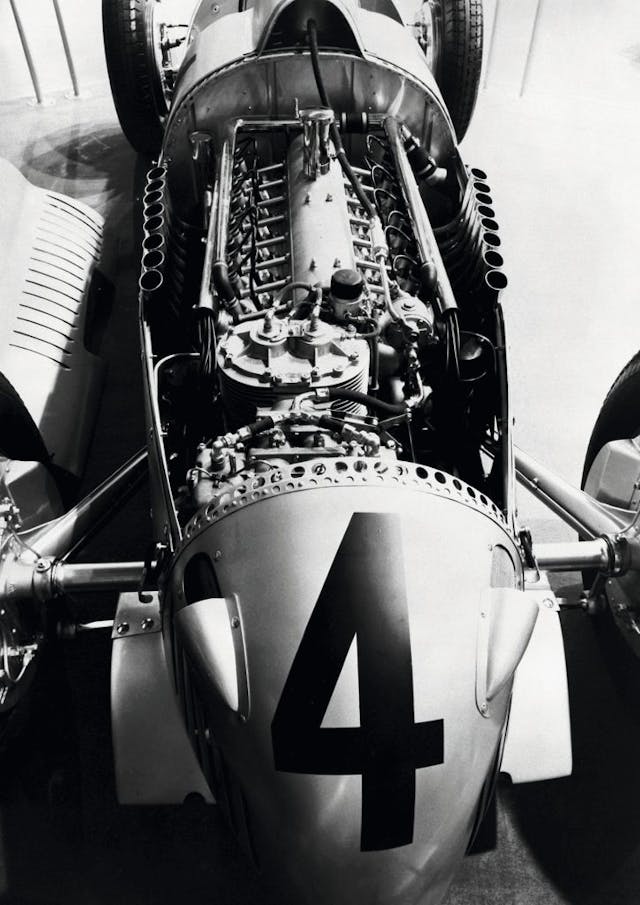
Skinny tires and a swing-axle rear suspension meant the word “handling” had not yet entered the race-car designer’s lexicon. Having no clue as to how a competition vehicle of this sort should feel in his hands, Rosemeyer was comfortable in the cockpit. Upon scoring lap times near the top of the heap of candidates trying out at the Nürburgring, Walb signed him as a cadet driver for the 1935 season.
Rosemeyer’s first race was at the AVUS (Automobil-Verkehrs-und-Ubungs-Strasse or “auto traffic and practice street”) near Berlin. The inaugural German Grand Prix was held there in 1926 on a course consisting of two six-mile straights connected by a 180-degree hairpin at one end and a sweeping bend at the other. Because Formula Libre rules governed AVUS, larger engines and streamlined bodywork were standard practice. Alfa Romeo fielded twin-engined cars. Unfortunately, the tires on Rosemeyer’s Auto Union were not up to the task, forcing his DNF (did not finish). Two years later, after the North Curve was reconstructed with 43-degree banking, 380,000 spectators watched Rosemeyer top 220 mph here on his fastest 173-mph lap.
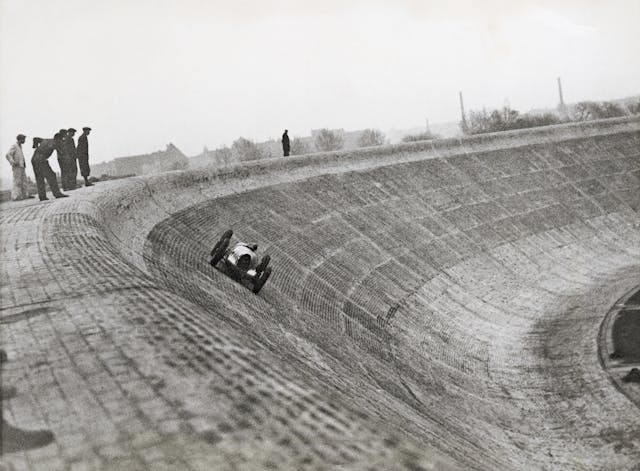
In his second race start at the daunting Nürburgring Eifel Grand Prix, Rosemeyer had a better opportunity to show his stuff. In spite of wet conditions on part of the 14.2-mile course, damage to his windshield and goggles, and a misfiring engine, Rosemeyer led two of the event’s eleven laps and finished only 1.9 seconds behind veteran Mercedes pilot Rudolf Caracciola. His tactical error was a premature upshift on the final straight which allowed Caracciola to whistle by. During the victory celebration, the veteran presented the upstart with a swizzle stick and the suggestion that he use his head better in the future. That he did. The following year Rosemeyer won two GP races at the Nürburgring while Caracciola was sidelined on both occasions.
Rosemeyer’s first victory came at the Czechoslovakian GP at the end of the 1935 season. On hand to toast his win was the world’s premier aviatrix, Elly Beinhorn, who earned her celebrity on solo flights crisscrossing the globe. The two were so instantly smitten with each other that a crowbar couldn’t pry them apart. They wed the following September between the Italian and German Grand Prix races.
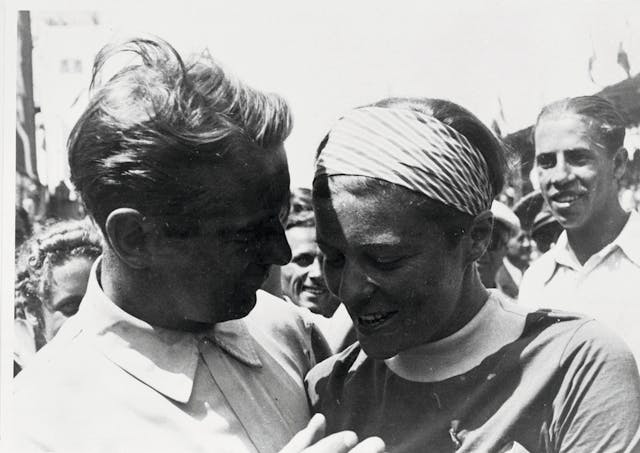
Rosemeyer and his wife were all smiles through 1936 when Bernd’s skills and Auto Union’s engineering expertise reached their apogees. While Mercedes struggled developing its redesigned racer, Rosemeyer won eleven events, including five August and September races in a row, an accomplishment that earned him the European Championship. To further exploit the daunting speed of its Type C single-seater, Auto Union entered Rosemeyer in hill climbs at Freiburg, where France, Germany, and Switzerland meet and at Feldberg in the Taunus mountains west of Frankfurt. Victories in both events earned Rosemeyer the German Mountain Championship in his banner year.
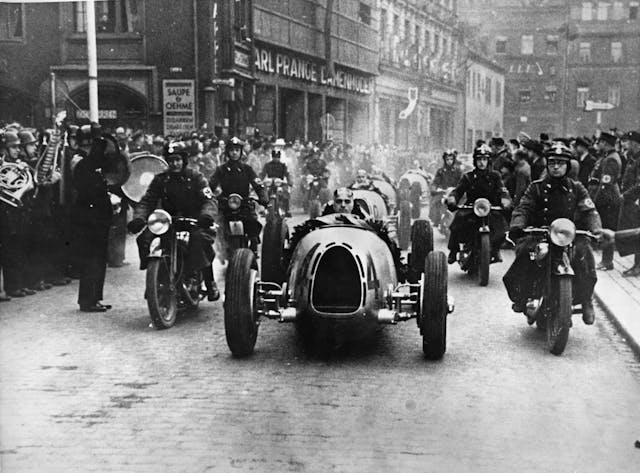
Mercedes bounced back in ’37 with notable engine and chassis improvements yielding a major edge versus Auto Union racing its ’36 Type C with only minor refinements. The new Mercedes W125 delivered 646 hp at 5800 rpm versus the Type C’s 520 hp at 4000 rpm. Softer springs, a longer wheelbase, and improved suspension yielded significant handling gains over the tail-heavy Auto Unions.
As usual, the British (ERA) and Italian (Alfa Romeo, Maserati) teams were out of the hunt. Mercedes won seven ’37 GP events to Auto Union’s five, with the European Championship going to Caracciola. Rosemeyer prevailed in four events, only two of which were full GP races. The more exciting competition occurred between the two German rivals post season when they raced for speed records on a 20-mile-long, four-lane-wide stretch of Autobahn between Frankfurt and Darmstadt.
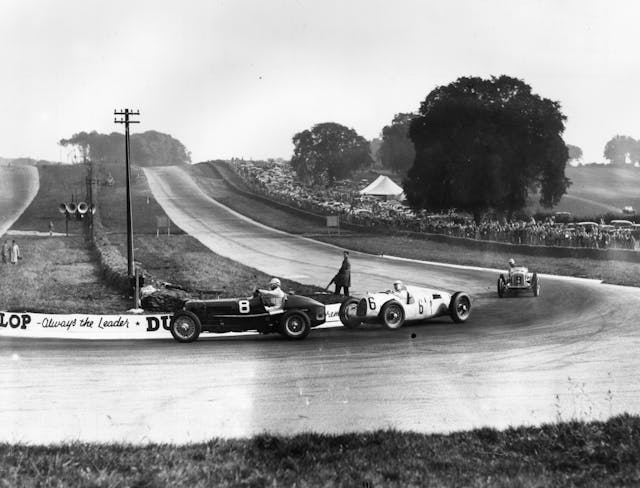
This is where Mercedes first topped 200 mph in a 600-hp streamliner driven by Caracciola after the 1936 GP season. For ’37, the Benz boys showed up with a 700-hp, 5.6-liter V-12 wrapped within bodywork boasting an incredibly low drag coefficient of 0.18 as measured in the company’s wind tunnel. While their goal was 264 mph, that speed proved elusive due to front lift issues. Above 237 mph, Caracciola’s steering and forward visibility were both nil, a condition known back in the day as “aviating.”
Auto Union had better luck. After Dr. Porsche left the firm in 1937 for greener pastures, his successor Robert Eberan von Eberhorst headed up Auto Union race-car design and development. The magnificent streamliner fielded for Rosemeyer following the GP season broke 16 records in two classes and ran 252 mph in the flying mile. While that sounds relatively straightforward, Rosemeyer described running flat out for ten miles on a 30-foot-wide section of pavement as requiring more effort than driving an entire GP race.

Considering the Berlin Motor Show publicity value associated with speed records, Mercedes had no intention of showing up for that august gathering empty-handed. Appeals lodged with der Führer yielded a second access to the Frankfurt-Darmstadt Autobahn at the end of January, a few days before the motor show opened. Both teams returned to their drawing boards, wind tunnels, and dyno cells in pursuit of more speed.
By 9:00 AM on January 28, 1938, Caracciola and Mercedes team manager Alfred Neubauer were celebrating their new 269-mph speed record over breakfast at Frankfurt’s Park Hotel. Two hours later, Auto Union took its shot at the prize even though weather reports warned of rising winds. The fearless Rosemeyer logged a warm-up pass of 267 mph with more available, he felt, from von Eberhorst’s radical racer.
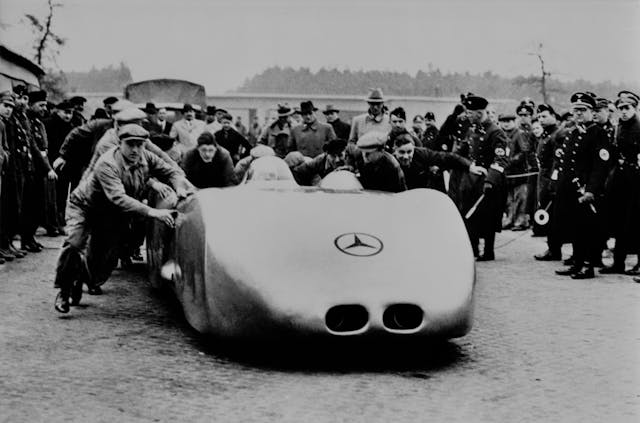
Like Mercedes, von Eberhorst blocked off the nose of his streamliner except for a tiny port that admitted a jet of air to feed the hungry V-16 and to supplement its ice-based cooling system. Vertical skirts nearly touching the pavement extended down the bodysides, past the rear wheels, to the very end of the car. The underside was sculpted into what we now call a diffuser: a flat surface between the side skirts rising at a slight angle to the very end of the car.
Wind-tunnel measurements conducted by von Eberhorst suggest he realized that aerodynamic downforce would be useful for keeping the Auto Union streamliner and its drive wheels in touch with mother earth. Unfortunately, there were subtleties he missed.
Rosemeyer never completed his record run’s outbound leg. At a speed later estimated to be 270 mph, his car was struck by a burst of wind that blew perpendicular to his path out of a clearing. His tires left 400 feet of skid marks verging toward the Autobahn’s median. When the tires tripped on grass, this poorly guided missile took flight in somersaults. Lacking restraints and a helmet, Rosemeyer was flung from his streamliner and landed 75 feet off the roadway next to a tree. Crew members found their hero with a weak pulse, no obvious injuries, and a pleasant expression on his face. His shattered bolide came to rest in pieces against a bridge berm.
The 28-year-old Rosemeyer died of a broken neck at the scene of the crash. A five-foot memorial at a rest stop south of the Morfelden-Langen Autobahn exit still marks his final resting place. His grave site at Germany’s Waldfriedhof Dahlem cemetery is but two miles from the AVUS course where his GP career began. His wife, who passed in 2007, and teammate Ernst von Delius are buried nearby.

Regrettably, von Eberhorst never addressed side-wind sensitivity during his wind-tunnel testing. His other crucial error was fully enclosing his streamliner’s front wheels, severely limiting the amount of counter-steering lock Rosemeyer had at his disposal.
These lessons were swept under the racing rug when World War II began 19 months after Rosemeyer’s demise. As a result, ground-effect race-car aerodynamics had to be re-invented: first by Jim Hall for the 1969 Chaparral 2J “sucker” car, then by Colin Chapman for the 1978 Lotus 78 Formula 1 single-seater.
Though his career lasted barely three years, Rosemeyer’s zest for speed and beaming smile will never be forgotten.
1936 Auto Union Type C specifications
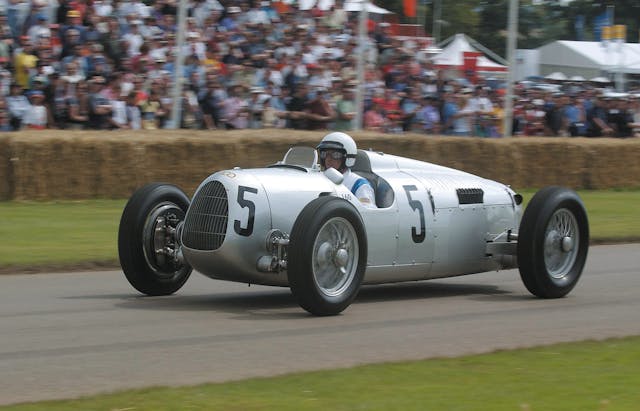
Engine: Roots supercharged 45-degree 6.0-liter V-16 with aluminum head and block, steel cylinder liners, 6-main-bearing crankshaft, and needle-bearing steel connecting rods
Bore x stroke: 2.95 in x 3.35 in
Maximum boost pressure: 13.8 psi
Fuel constituents: 60-percent alcohol, 20 percent benzol, 10 percent diethyl ether, 8 percent gasoline, 1.5 percent toluene and nitrobenzene, 0.5 percent castor oil
Power: 520 hp @ 5000 rpm
Torque: 629 lb-ft @ 2500 rpm
Transmission: rear-mounted 5-speed
Wheelbase: 114.2 in
Front, rear tracks: 55.9 in
Race-ready weight: 2180 lbs
F/R distribution: 42/58 %
Front suspension: two trailing links, torsion bars, adjustable friction dampers
Rear suspension: swing axles, torsion bars, adjustable friction dampers
Brakes: Lockheed finned drums, hydraulic actuation
Tire size: f 5.25 x 17 in; r 7.0 x 19 in
Fuel capacity: 53 gallons (positioned between the engine and the driver’s seat)


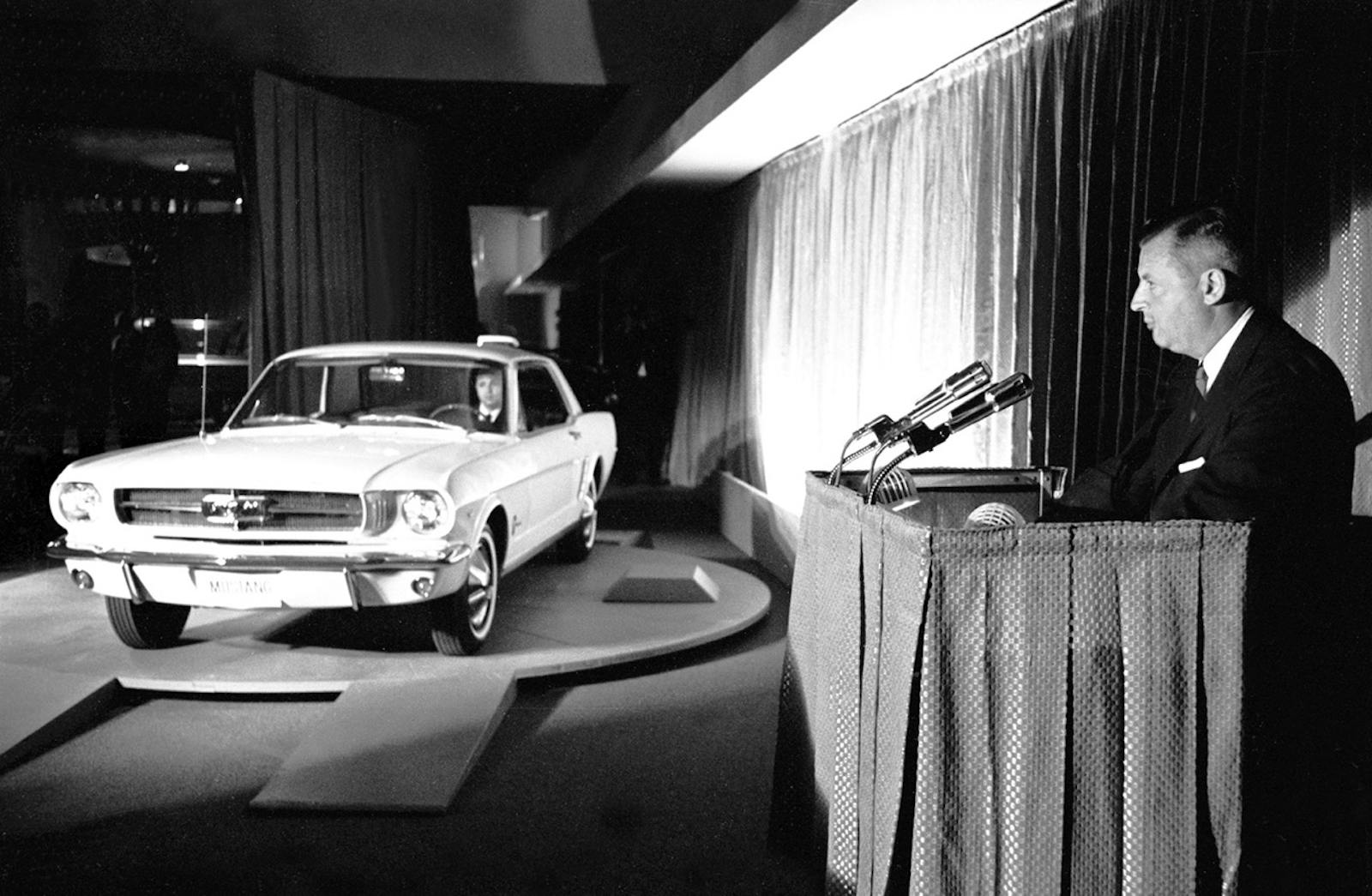
I came across the legend of Rosemeyer many years ago. We share a birthday, I felt that was destiny and enjoyed some great time on the track years ago. Berndt wore his machines as if they were parts of his body, I always channeled that feeling whether on a motorcycle or in a car. Yes, I have stood on the seat of my Indian but I’d not attempt it again! Being able to internalize and react to physics the way Berndt did will probably never be replicated though I think Pastrana and Block are / were pretty damned close!